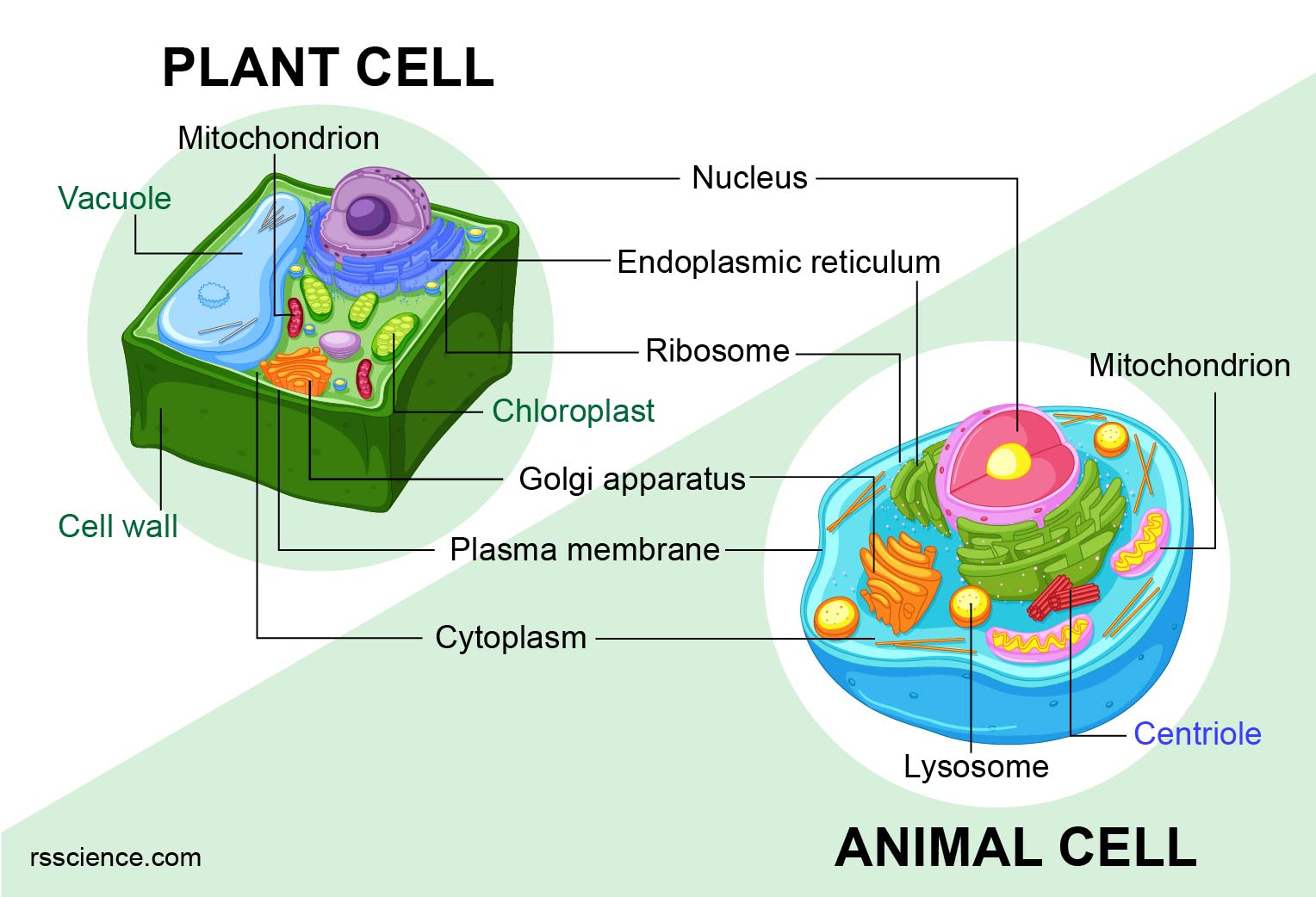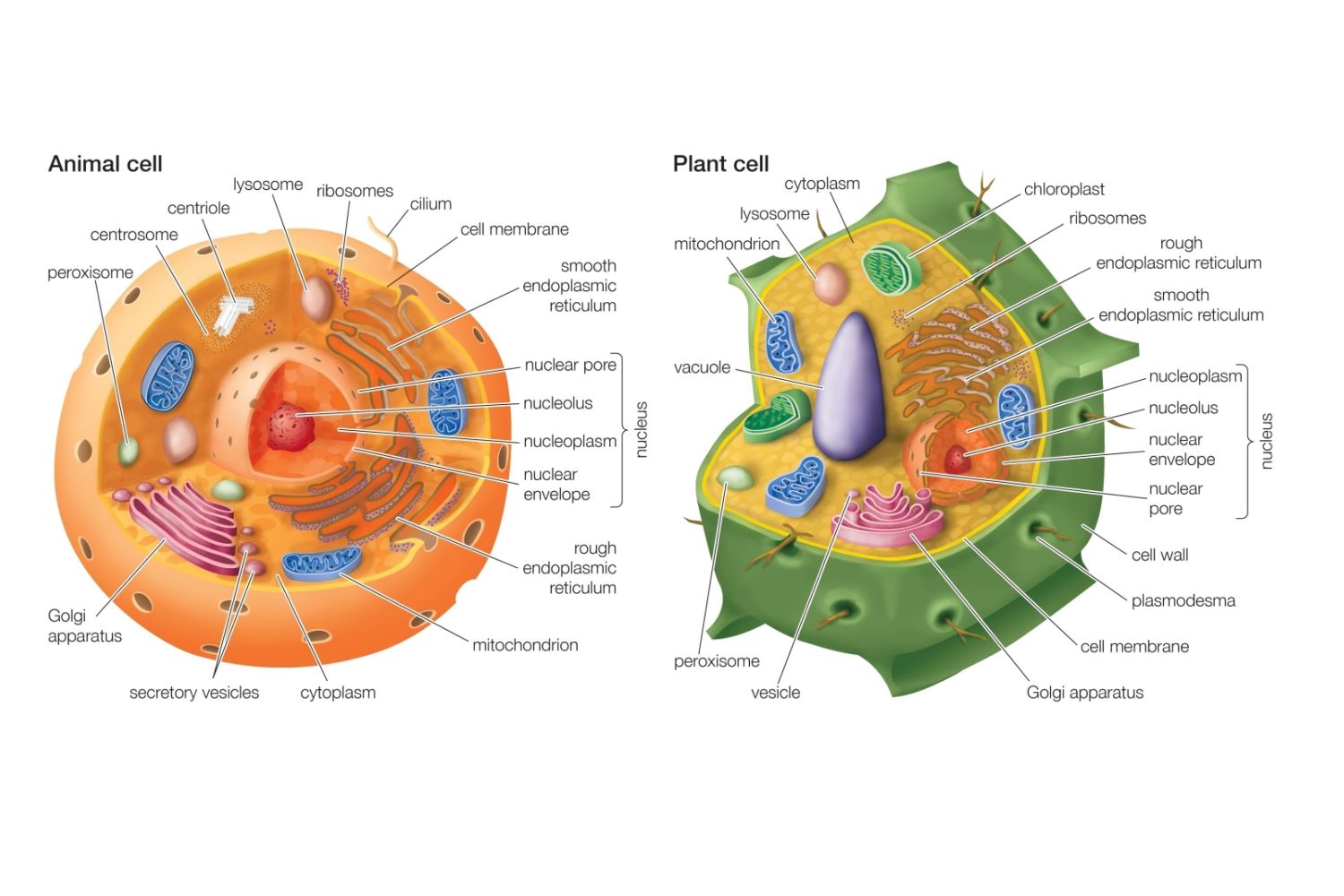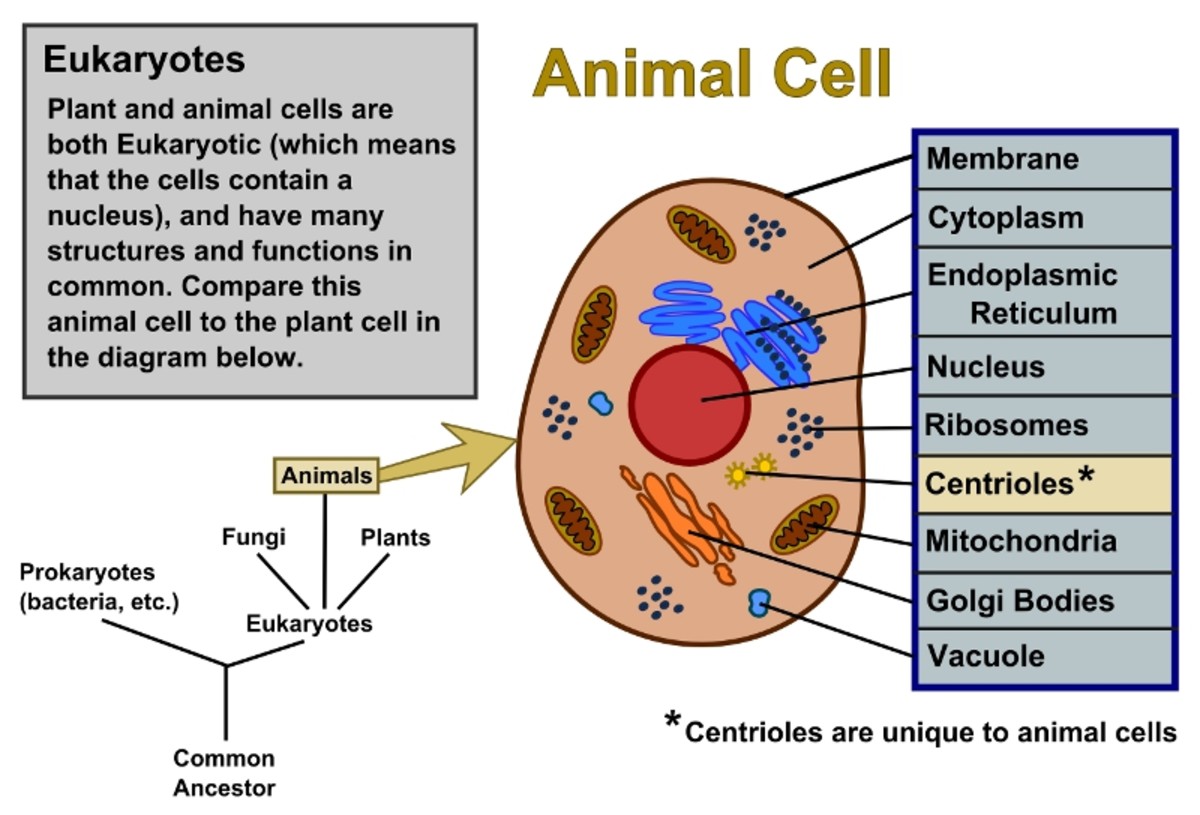
Top 169 + Main differences between plant and animal cells
Diagram of an animal cell Doc Sonic Structures Unique to Animal Cells While animal cells do not have a cell wall, chloroplasts, or a large vacuole, they do have one component plant cells do not. Centrioles: Animal cells contain organelles known as centrioles, which are not present in plant cells.

47+ Plant Cell And Animal Cell Diagram With Label Pictures
The Nucleus The nucleus is a key structure in all eukaryotic cells, as it stores all of the cell's DNA (and therefore, genetic information). The nucleus also controls and regulates all the vital functions of the cell, including protein production, cell division, metabolism, and growth.

South Pontotoc Biology Plant and Animal Cell Diagrams
Animal Cell: An animal cell is a type of eukaryotic cell that lacks a cell wall and has a true, membrane-bound nucleus along with other cellular organelles. Diagram of Plant and Animal Cell Fig: Plant Cell Fig: Animal Cell Learn Exam Concepts on Embibe Plant and Animal Cell Structures Both plant and animal cells have similar types of architecture.

Animal vs. Plant cells Similarities, Differences, Chart, and Examples
Key points: All cells have a cell membrane that separates the inside and the outside of the cell, and controls what goes in and comes out. The cell membrane surrounds a cell's cytoplasm, which is a jelly-like substance containing the cell's parts. Cells contain parts called organelles. Each organelle carries out a specific function in the cell.

Label the Parts of the Plant and Animal Cell Biology LibreTexts
A plant cell is the basic building block of a plant. Plant cells, like all eukaryotic cells, contain a nucleus and other organelles, each with its distinct functions. However, plant cells also possess unique components that differentiate them from animal, fungal, and bacterial cells. Plant Cell Characteristics. Plant cells are eukaryotic.

View 15 Labeled Simple Animal And Plant Cell Diagram greatwatergraphics
A plant cell consists of one large vacuole that maintains the shape of the cell and stores nutrients. Animal cells, on the other hand, have multiple smaller vacuoles. Both plant and animal cells have a cell membrane, but only the former has a cell wall. The absence of a wall makes it possible for animals to develop different types of cells and.

Plant Cell and Animal Cell Diagram Worksheet PDF
A plasma membrane encloses the cell contents of both plant and animal cells, but it is the outer coating of an animal cell. Animal Cell Structure: Organelles and Their Functions. Animal cells contain many organelles, which are subunits within the cell that perform specialized functions. The organelles may be membrane-bound (enclosed within a.
Top 199 + Draw the diagram of plant cell and animal cell
plant cell, the basic unit of all plants. Plant cells, like animal cells, are eukaryotic, meaning they have a membrane-bound nucleus and organelles. The following is a brief survey of some of the major characteristics of plant cells. For a more in-depth discussion of cells, see cell. Unlike animal cells, plant cells have a cell wall surrounding.

Pin on my computer
Animal Cells versus Plant Cells. Each eukaryotic cell has a plasma membrane, cytoplasm, a nucleus, ribosomes, mitochondria, peroxisomes, and in some, vacuoles; however, there are some striking differences between animal and plant cells. While both animal and plant cells have microtubule organizing centers (MTOCs), animal cells also have.

Plant And Animal Cell Blank Diagram blank animal and plant cell
Key points Cells are the smallest unit of life and the building blocks for all organisms. Each component of a cell has its own function. Animal and plant cells differ and they have.

Animal Cell Diagram Label
Eukarya All multicellular organisms in the five kingdoms are in the Eukarya domain, including all plants and animals. Unlike their smaller single-celled counterparts, the prokaryotes in the Archaea and Bacteria domains, eukaryotes have a nucleus enclosed by a nuclear membrane as well as other membrane-bound organelles.

What does a plant and animal cell have in common? Socratic
Animal and plant cells have some of the same cell components in common including a nucleus, Golgi complex, endoplasmic reticulum, ribosomes, mitochondria, peroxisomes, cytoskeleton, and cell (plasma) membrane. While animal and plant cells have many common characteristics, they are also different. Differences Between Animal Cells and Plant Cells

Animal Vs Plant Cell Diagram New Prokaryote Vs Eukaryote Ppt Video
Overview of animal and plant cells (video) | Khan Academy Biology library Course: Biology library > Unit 8 Lesson 4: Extracellular structures and cell-cell junctions Extracellular matrix Plant cell walls The extracellular matrix and cell wall Cell-cell junctions Extracellular structures and intercellular junctions Overview of animal and plant cells

Eukaryotic Plant And Animal Cell Diagram Goimages Home
Biology Article Plant Cell Plant Cells - Definition, Diagram, Structure & Function The cell is the basic unit of life in all organisms. Like humans and animals, plants are also composed of several cells. The plant cell is surrounded by a cell wall which is involved in providing shape to the plant cell.

Plant Cells vs. Animal Cells, With Diagrams Owlcation
Animal Cell: Structure, Parts, Functions, Labeled Diagram. An animal cell is a eukaryotic cell that lacks a cell wall, and it is enclosed by the plasma membrane. The cell organelles are enclosed by the plasma membrane including the cell nucleus. Unlike the animal cell lacking the cell wall, plant cells have a cell wall.

Plant Cell vs. Animal Cell (25 Major Differences)
Multicellular organisms are more complex. All plants and animals are multicellular. In multicellular organisms, the cells are not individual compartments. In fact, they are able to communicate with each other through signals to coordinate and respond to stimuli from their external environment.